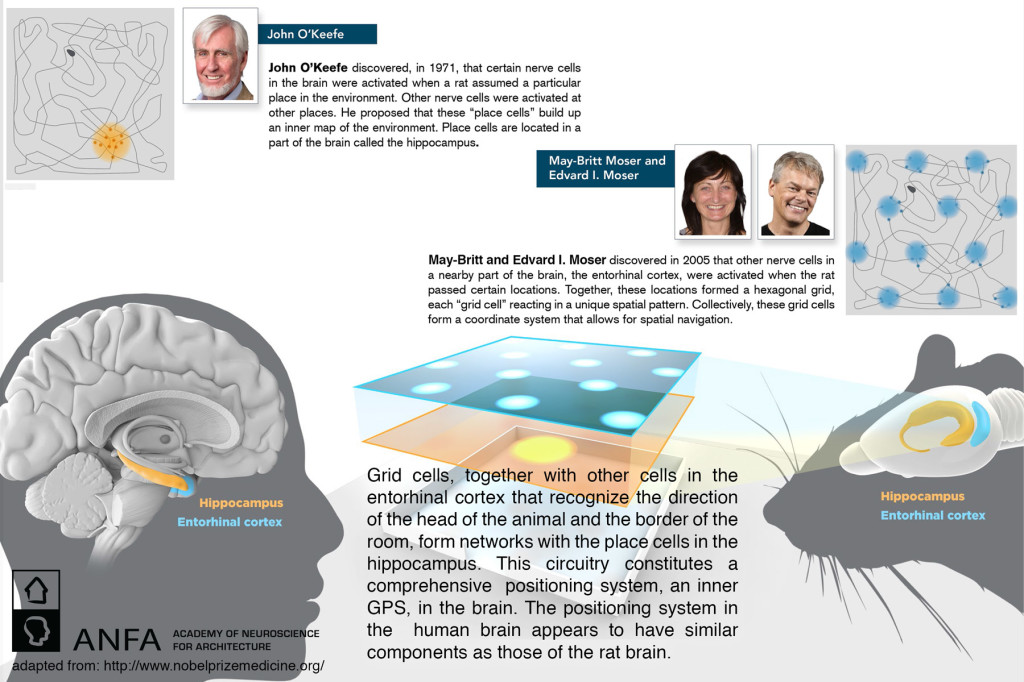Nobel Prize in Medicine
Nobel Prize in medicine awarded for discovery of brain’s ‘GPS’.
Three scientists, including a husband-and-wife team, have been awarded this year’s Nobel Prize in medicine for deciphering the mechanism in the brain that allows us to find our way around.
The three winners of the world’s most coveted medical research prize are John O’Keefe, who holds both U.S. and British citizenship and is director of the Sainsbury Wellcome Center in Neural Circuits and Behavior at University College London; May-Britt Moser, a professor of neuroscience at the Norwegian University of Science and Technology; and Edward I. Moser of the same university.
All worked on different components of the same problem: how we “orient ourselves in space” and navigate, the Stockholm-based Nobel committee said in announcing the prize Monday. The discovery of what the group called the brain’s “inner GPS” has “solved a problem that has occupied philosophers and scientists for centuries.”
O’Keefe discovered the first component of this system in 1971. He found that when he placed rats in certain parts of a room different cells in the brain’s hippocampus – which is believed to be important in functions related to space and memory — were always activated. He theorized that these areas that he called “place cells” formed a map of the room.
The Mosers, who are from Norway, followed up on that research in 2005, finding what scientists dubbed “grid cells” that make up a coordinate system that allows us to navigate. The couple was researching rats moving in a room when they noticed that another area of the brain, the entorhinal cortex, was activated in a unique spatial pattern that corresponded with the location of the animal’s head and the borders of the room.
Research into the inner workings of the brain has been among the top priorities for the scientific community in recent years. Last year, the European Union launched a 10-year effort to simulate the human brain on supercomputers. And President Obama launched a $100 million initiative to build tools to accelerate the pace of brain research – an effort that many believe will be as groundbreaking as the Human Genome Project, which led to the sequencing of the 3 billion base pairs that comprise human DNA.
Last year, two Americans — James Rothman of Yale University and Randy Schekman of the University of California at Berkeley — and German-born Thomas Suedhof of Stanford University won the Nobel in medicine for their work on how the body’s cells communicate. The research has had a major impact in our understanding of how the brain transmits signals.
Cornelia Bargmann, a neurobiologist at Rockefeller University and a 2013 winner of the Breakthrough Prize in Life Sciences, funded by Internet entrepreneurs Mark Zuckerburg, Sergey Brin and others, said this year’s Nobel-honored work is groundbreaking because it not only tells us about how the brain understands space but more complex cognitive relationships, as well.
Bargmann, co-chair of the advisory committee for the president’s BRAIN (Brain Research Through Innovative Neurotechnologies) initiative, said the scientists showed the brain creates a two-dimensional grid of the world based on “a group of neurons that tell you where you are moving and how you have been.” Those points are in turn linked to people, places and other sights, smells and experiences.
“The first time I saw that work I nearly fell out of my chair — it is so amazing,” she said. “It is the beginning of how memory is represented. This is why some people compare memories to moving through space.”
Joshua Sanes, director of Harvard University’s Center for Brain Research, said that while the work by O’Keefe and the Moser is still in the early stages – it has only been done in animals, and it’s unclear whether human brains are set up the same way – it provides fundamental insights into brains and their relation to life.
“It’s about navigational abilities that little kids have, mice have, ants have and honey bees have,” he said. “It’s a very basic evolutionary mental activity that is absolutely critical for many species’ survival. How the brain works is maybe the biggest mystery that remains in all the world of the life sciences, and this is a key piece in the puzzle.”
The Nobel winners’ work provides such a fundamental insight into the brain that many neuroscientists are hopeful that the discovery will one day help us find treatments for a host of neurological conditions.
“The studies were of a part of the brain involved in certain neurological disease, such as Alzheimer’s, and getting lost is a symptom of Alzheimer’s,” Sanes explained. “While nobody should be thinking this is on the direct road to a treatment, but it provides a starting point for the first time.”
Emery Brown, a member of the advisory committee for the BRAIN initiative, said he expects work building on the three scientists’ discoveries to accelerate over the next few years as scientists try to figure out whether the place and grid cells work the same way in humans.
If it turns out to be the case, he said, the implications are far-reaching.
“You could think of ways to help stimulate areas to enhance memory, to help people who have had brain injuries recover function, maybe even to help preserve function as we grow older,” said Brown, a professor of computational neuroscience at the Massachusetts Institute of Technology.
The Nobel Prize in physics will be announced Tuesday, the prize in chemistry Wednesday, and literature on Thursday. The Nobel Peace Prize will be announced Friday. A prize in economics, in memory of Alfred Nobel, will be announced on Oct. 13.
==========================
Nobel Prize for Medicine: How Humans Navigate
<object width=”420″ height=”236″><param name=”movie” value=”//www.youtube-nocookie.com/v/tx5KQlklNnM?version=3&hl=en_US&rel=0&showinfo=0″></param><param name=”allowFullScreen” value=”true”></param><param name=”allowscriptaccess” value=”always”></param><embed src=”//www.youtube-nocookie.com/v/tx5KQlklNnM?version=3&hl=en_US&rel=0&showinfo=0″ type=”application/x-shockwave-flash” width=”420″ height=”236″ allowscriptaccess=”always” allowfullscreen=”true”></embed></object>





